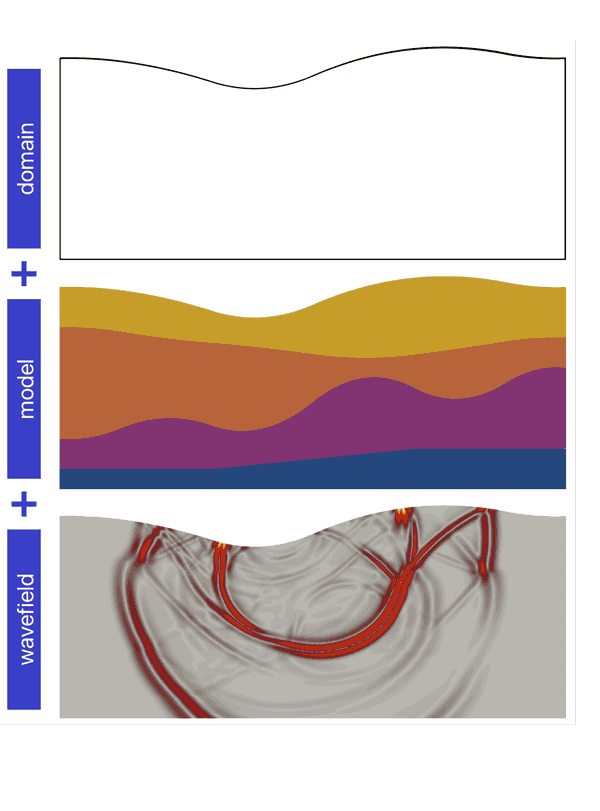Talking about the polynomial order might be ambiguous. In principle, a different degree might be used for domain, model and wavefield. In Salvus, however, we currently only distinguish between the 'tensor_order' which is the polynomial degree used for the domain and the model, and the degree of the wavefield, which for simplicity, we continue to call 'polynomial_degree'.
Mesh Generation
Generating meshes for efficient waveform simulations in heterogeneous media with complex topography or internal structures has long been considered a difficult and time-consuming task.
SalvusMesh is a powerful tool to automate or at least prototype the generation of highly efficient spectral-element meshes.
On the following pages, we describe requirements, design criteria and potential pitfalls of generating meshes.
Discrete representation of domain, model and the wavefield
Before Salvus can crunch some numbers, all physics need to be represented by a finite set of values. In particular, there are three different entities that need to be discretized:
- the domain that is the geometry of the object through which the waves propagate
- the model or medium properties that is how density and velocity vary within the domain
- the wavefield that is the space- and time-dependent solution of the wave equation.

Here, we focus on discrete representations using finite-element meshes of variable polynomial order. Note that the discrete representation of all entities involves polynomials, describing (1) the shape transformation of the elements to characterize the domain, (2) the interpolation of the medium parameters for the model, and (3) the discrete spatial representation of the wavefield. Alternative approaches which not covered could include, for instance, wavelets, spherical harmonics, or splines.
Frequency Matters
The highest resolvable frequency - or the shortest period, respectively - is the main external driver governing the mesh generation. It influences the wavelengths of the wavefield, the effective medium which results in a homogenized model, as well as the resolution of topography and bathymetry that yield the effective domain.
The computational costs are proportional to the number of elements and the number of time steps. Being able to resolve higher frequencies obviously increases the costs. The following pages summarize other factors of influence for efficient mesh generation.
 Mondaic
Mondaic